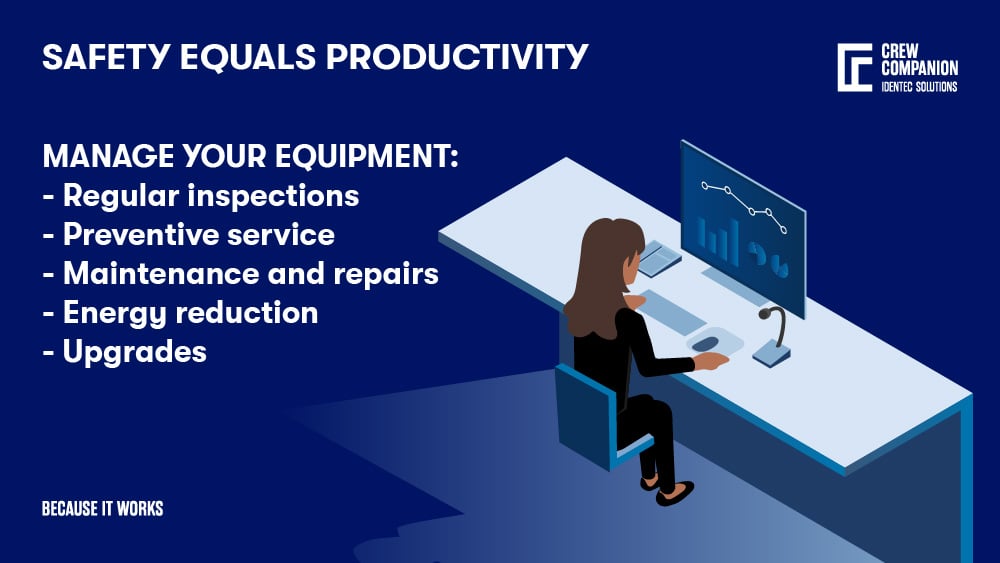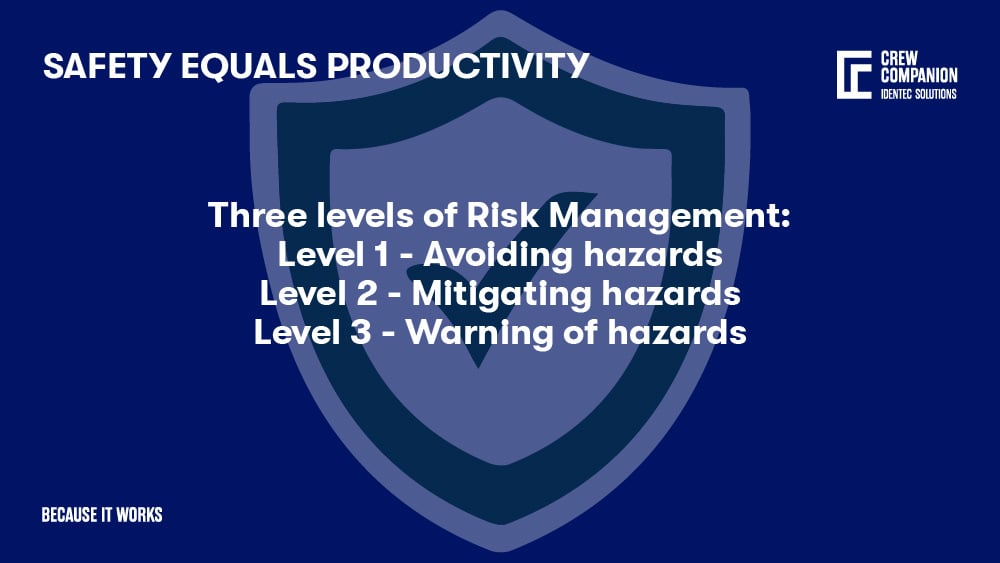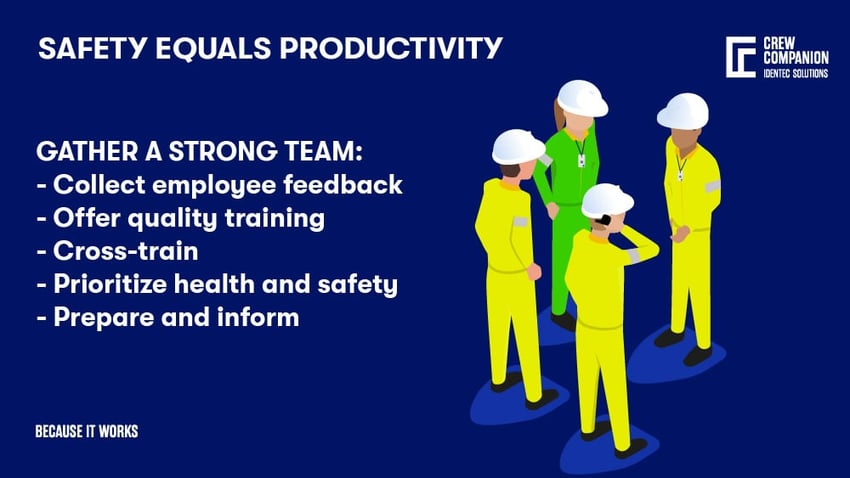Mine Risk Management: Safety = Productivity
| Written by Mark Buzinkay
Risk management enables the mining operators to address the most burning tasks of operational decisions and define the fundamental aspects of corporate culture, such as safety and equipment maintenance. As productivity depends on a smooth usage of equipment, resources and workforce, everything that happens unplanned may disrupt the complex choreography of mining processes. Risk management is best supported by solid data from the field - monitoring the conditions of machines, the site and the workforce in real-time.

No video selected
Select a video type in the sidebar.
Table of contents:
- What Is The Benefit Of Risk Management In Mining?
- How Do Costs Relate To Mine Risk Management?
- Mine Risk Management: Productivity
- Mine Risk Management: Safety
- Learning Every Day
- Takeaway
- Glossary
What is the Benefit of RISK MANAGEMENT IN MINING?
The mining industry has always been risky, with worker safety concerns representing only a portion of the challenges. Increasingly strict regulations, reliance on technology, inconsistent demand for raw materials and high commodity prices are matters of high importance for a mining company. Fortunately, most mining corporations can offset this with effective risk management programs. Moreover, many industry executives are already ahead in effectively managing risks. They understand that significant gains often come with considerable risks, and well-designed programs enable them to pursue those opportunities safely.
Some of the top risks in the mining business include:
- Commodity Price Risk
- Business interruption
- Regulatory changes
- Environmental risk
- Economic slowdown
A risk management program allows mining companies to ensure the success of their operations. The key lies in understanding all the risks before committing to any specific project. For example, one of the leading concerns is a skills shortage. A significant portion of miners are retiring, and there isn't an influx of talented workers to substitute them, especially in remote regions. This can lead to project delays, higher labour costs and other production impacts such as reduced risk awareness. Another key risk is 'resource nationalism'. Countries are starting to acknowledge the value of the raw materials that originate from their land and, as such, are beginning to set higher taxes on foreign mining companies. This can increase the cost of operations significantly.
How do Costs relate to MINE RISK MANAGEMENT?
Besides external risk factors, which are impossible or hard to influence, cost and productivity are the fundamental elements determining an outfit's success. Excellent equipment and skills, favourable ore conditions and outstanding safety culture influence cost and productivity most, and make risk management of these factors mandatory.
Favourable ore conditions
The ore conditions—the size, shape, and orientation of the ore body, as well as the grade of mineralisation, the strength of rock materials, and even the depths you are working with—will all directly affect which mining method you utilise. The ore conditions will also affect how much your project will ultimately cost. High-grade ore is what every mine operator strives for. Still, when discontinuities accompany that high-grade ore body in the seam, variabilities in the seam with inclusions of waste rock or slips requiring mechanical supports, the costs per ton can escalate. The better the exploration, the better you can assess the ore quality risk.
Maintenance costs
Everyone in the world of mining knows there is a dreaded word: downtime. When operations slow down due to equipment failure (or, in a worst-case scenario, halt altogether), productivity suffers, and profits plummet. Risk management of equipment failure means moving away from reactive approaches to maintenance and heading toward preventive—and predictive—maintenance. The preventative approach does just as its name suggests. You can reduce downtime by regularly inspecting equipment to catch any minor problems and immediately fixing them before any more significant issues have time to develop. Ideally, a company's equipment will move from one planned service to the next without experiencing severe equipment or system failures, thus reducing costs and keeping productivity at its peak.
Consumables cost and availability
Ensuring you have the necessary parts and "ingredients" to keep your operations running is essential, regardless of how prices ebb and flow. For this reason, proper and intelligent management of your commodities is vital. This could mean keeping a certain amount of spare parts in stock. But, as with everything, stockpiling too much will result in tying up the necessary capital. Appropriate risk management manages an accurate stockpile of your necessities.
Labour costs and availability
Very similar to consumables, labour costs and availability must be considered. Much depends on the ability to procure and retain a well-trained staff, who can ensure a consistent flow of good work organisation and help to maintain a high level of mining process mechanisation—all of which optimises productivity and reduces underground facilities' overall costs. Risk management includes, foremost, the safety and health conditions, hazard evaluation and risk analysis.
As we now understand the main drivers of costs and the need to manage them from a long-term perspective, let's dive into the domain of productivity.
Hard Fact Copper Production Worldwide: In 2020, global production increased by 1.36% to 20.7 Mio tons. Copper is one of the most important minerals to enable the green energy transition.

MINE RISK MANAGEMENT: PRODUCTIVITY
In general, productivity means higher output with the same amount of input. For example, productivity in the mining industry means the following:
- Have a steady or increasing output for materials mined and moved.
- Can successfully manage the safety of the crew, equipment, and surrounding environment.
- Protect the bottom line and seek areas to minimise costs and waste.
- Perform specific job tasks with accuracy while seeking new ways to improve processes.
There are many ways to increase productivity along these four general aspects of mining operations. Let's pick (deliberately) two of them: personnel and equipment. Optimising available hours and assets helps work more efficiently, protects profits, and gives your business a cutting edge over the competition.
Manage Your Equipment
Manage your tools and equipment to keep operating smoothly and avoid expensive repairs, replacements, and unexpected downtime. The best way to do this is to establish an equipment management plan that accounts for every machine's needs, like regular servicing, preventive maintenance, troubleshooting, and fuel consumption.
Include the following in your equipment management plan:
- Regular inspections: Before and after each use and when any problems arise, you should inspect the equipment. Establish a clear protocol for employees to follow should they find anything concerning during regular inspections.
- Preventive service: Regularly scheduled checkups from an equipment specialist are crucial to maintaining the machine's integrity. Preventive services will fix malfunctions before they happen and prevent safety risks and downtime.
- Maintenance and repairs: Should a machine's warning sign light up, discontinue use and head for inspection.
- Energy reduction: Monitoring energy consumption is an excellent way to save on consumption (costs) and to discover malfunctions like leaks (safety).
- Upgrades and improvements: Even the most reliable equipment can benefit from occasional upgrades and enhancements.
A strong team
Your crew plays the most prominent role in your mine's productivity. You can create a strong team by setting up a program covering the following aspects (see also: responsible mining):
- Quality training programs for new and existing employees include ongoing training sessions throughout the year and as needed for changes (e.g. in industry standards, staff reorganisation, new equipment, enhanced safety protocols). Training is the best way to keep the minds of your team sharp and focused on the task at hand, and it translates to a safer, more productive job site (see also: Safe zone training).
- Regularly collect employee feedback to learn what changes and improvements they need to do their jobs well, like better safety equipment. Making these changes creates a more positive work environment while arming your team with everything they need to succeed.
- Cross-train your best workers in other sectors of the mine. This reduces the cost of hiring additional help while encouraging long-term career development for your existing employees.
- Prepare your team and provide as much information as needed (e.g. site concerns and requirements, long-term and short-term goals, and specific site standards for safe and fast equipment operation).
- Nothing is more important than your employees' well-being. Therefore, prioritise health and safety during all purchasing and assignment decisions to avoid dangerous and potentially life-threatening situations. Hazardous work conditions aren't just risky — they can also be expensive. For example, occupational mining injuries create costly downtime and could damage tools or materials in the process.

MINE RISK MANAGEMENT: SAFETY
As labour is the most critical asset of your operation, you don't want to sit them idle; you don't want to pay them for waiting. On the other hand, you don't want to run low on the workforce and don't want to pay high insurance, penalties or compensations for safety-related issues either. There is one answer: Run a safe mining operation. Productivity depends on your team, and a strong team needs to be safe.
The most recommended, industry-wide approach to safety in general, but mining in particular, is to take a 1-2-3 risk management approach. The top priority in risk management is always to eliminate risks as much as possible. The first level eliminates the hazard and the associated risk and is the most effective measure of control (e.g., no holes in the floor where people work). If this is not reasonably practicable, risks should be mitigated by substituting the hazard with something safer (install guard rails). The third level acts as an administrative control to minimise exposure to a threat (warning signs or protective equipment).
Following the three levels of risk management, an efficient safety approach could be established to mitigate the risks at all three stages:
Level 1 - Avoiding hazards at all: Close off areas and control site access, using, for example, electronic tags that act as keys to mines in general, but also to certain areas (e.g., explosives' storage)
Level 2 - Safeguarding against hazards: Reporting the safe zone position of every worker underground or above ground in case of a scheduled blast (learn more about RFID in mining).
Level 3 - Warning of hazards: Personal tags indicate the current positions and the route to safety in an emergency (read on about personnel tracking in mines).
These examples show that the safety, risk management and continuous operation of a mine are aligned. Efficient operations require visibility (workers and machinery) and preparation for an emergency. In general, a scheduled blast won't disrupt ongoing mine operations for too long but will integrate efficiently into the daily work procedures.
Learning Every Day
The Australian Mining Safety and Health Advisory Committee recently launched a new educational resource aimed at enhancing risk assessments within the mining and quarrying sectors. Kate du Preez, the Commissioner for Resources, Safety and Health and chair of the advisory committee, stated that the Risk Assessment Education Resource is tailored to improve risk management practices and the verification of critical controls in these industries (1).
Kate du Preez explained, “This resource is designed to deliver better safety and health outcomes for those in Queensland’s mineral mining and quarrying sectors by providing practical examples of effective risk management.” She added that the guide details methods for creating robust risk assessments and includes instructions on the most commonly used tools in operational risk assessments, such as the workplace risk assessment and control (WRAC) technique and bowtie analysis. “It also discusses the identification of controls and how to evaluate the effectiveness of those controls, as well as major hazards and critical controls. Finally, the resource provides example templates for mineral mines and quarries to use in their own operations and example risk assessment for the management of vehicle/mobile plant interactions.”
The Risk assessment education resource was launched by the Mining Safety and Health Advisory Committee at its Vehicle interaction safety forum held in Brisbane on 12 July 2023.
TAKEAWAY
Risk management enables the operations directors to address the most burning tasks of operational decisions and define the fundamental aspects of corporate culture, such as safety and equipment maintenance. Productivity depends on a smooth usage of mining technology, resources and workforce, and everything that happens unplanned may disrupt the complex choreography of mining processes, resulting in lower mine productivity. Risk management is best supported by solid data from the field - monitoring the conditions of machines, the site and the workforce in real-time.
Dive deeper, browse through our wide selection of articles and learn much more about miner safety!
Glossary
Workplace Risk Assessment and Control (WRAC) is a structured process used in mining to identify, evaluate, and mitigate potential hazards. It involves systematically assessing risks associated with mining activities to prevent accidents, injuries, and operational disruptions. The WRAC method helps categorise risks based on their severity and likelihood, ensuring that appropriate control measures are implemented. By proactively addressing workplace hazards, WRAC enhances safety, regulatory compliance, and overall efficiency in mining operations. This process is essential for minimising risks related to equipment, environmental conditions, and human factors in high-risk mining environments.
Sources:
(3) https://www.qmihsconference.org.au/wp-content/uploads/qmihsc-2016-keynote-clough.pdf
Note: This article was updated on the 5th of August 2025.

Author
Mark Buzinkay, Head of Marketing
Mark Buzinkay holds a PhD in Virtual Anthropology, a Master in Business Administration (Telecommunications Mgmt), a Master of Science in Information Management and a Master of Arts in History, Sociology and Philosophy. Mark spent most of his professional career developing and creating business ideas - from a marketing, organisational and process point of view. He is fascinated by the digital transformation of industries, especially manufacturing and logistics. Mark writes mainly about Industry 4.0, maritime logistics, process and change management, innovations onshore and offshore, and the digital transformation in general.






